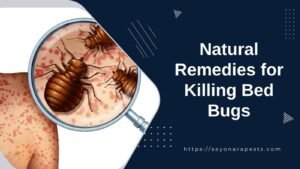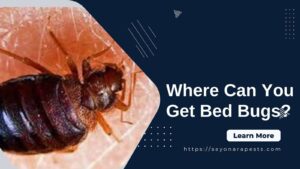Effective Bed Bug Freezing Methods
Freezing is a non-toxic method that can eradicate bed bugs by crystallizing the fluids in their cells, leading to their demise. This strategy can be an effective component of an integrated pest management approach for controlling bed bug infestations.
Freezing Bed Bugs: The Basics
The principle behind freezing to kill bed bugs is straightforward: bed bugs are exposed to temperatures cold enough to freeze and kill them. This method is particularly useful for items that cannot be treated with heat or chemicals.
While freezing to kill bed bugs is a viable option, it requires specific temperature conditions and time frames to be effective.
To ensure success, homeowners and renters alike should be aware that not all freezing environments are equally effective.
Most standard home freezers may not reach the necessary temperatures to quickly kill bed bugs. For this reason, it is recommended to use deep freezers or professional freezing services that can maintain consistently low temperatures.
Duration and Temperature Requirements
According to Thomas Pest Services, to achieve a 100% mortality rate in bed bugs, they must be exposed to a minimum temperature of minus 16 degrees Celsius (3.2 °F) for at least 80 hours. However, lower temperatures can reduce the required exposure time:
| Temperature | Duration Required |
|---|---|
| Below -15°C (5°F) | 3.5 days |
| Below -20°C (-4°F) | 48 hours |
| Below -25°C (-13°F) | Short-term exposure |
The Journal of Economic Entomology provides further insight, suggesting that all life stages of bed bugs are freeze intolerant and cannot survive temperatures below their body freezing point, with a lower lethal temperature (LLT99) of -31.2°C.
For individuals considering DIY methods, placing infested items in sealed plastic bags and keeping them in a deep freezer for a minimum of 3-4 days is advised.
However, caution is necessary with items that could be damaged by freezing temperatures, such as electronics and certain materials.
Understanding the right conditions and methods for freezing to kill bed bugs is crucial, as inadequate freezing conditions may not only be ineffective but could also allow bed bugs to survive and repopulate.
For those seeking alternative methods, other strategies such as killing bed bugs with heat, using steam, or chemical treatments might be more suitable.
Items Suitable for Freezing
Freezing is a non-toxic method that can be an effective way to eliminate bed bugs from various household items. When considering freezing to kill bed bugs, it is essential to understand which items are suitable for this treatment and how to properly execute the freezing process.
Soft Toys and Bedding
Soft toys, plush animals, and bedding are often harbors for bed bugs. Fortunately, these items are ideal candidates for freezing due to their fabric nature.
According to the University of Minnesota Extension, these items should be placed in a plastic bag and left in a freezer at 0°F (-18°C) for at least four days to ensure all life stages of bed bugs are terminated.
Alternatively, soft toys can be subjected to a dryer at a medium to high heat setting for 30 minutes as a preliminary measure before freezing.
| Item | Treatment Method | Duration |
|---|---|---|
| Soft Toys | Freezer at 0°F (-18°C) | 4 days |
| Bedding | Freezer at 0°F (-18°C) or Dryer at Medium/High Heat | 4 days or 30 minutes |
Plastic or Wood Items
Plastic and wood items, such as toys and small furniture, can also be treated by freezing. It’s advisable to clean these items with a warm damp cloth to remove any visible bed bugs or eggs.
For thorough extermination, these items can be placed in the freezer at the same temperature and duration as soft toys.
Pest Out advises caution with items that may be damaged by moisture or are of high value.
Books and Other Possessions
Books and similar possessions are often overlooked as bed bug hiding spots. To treat these, they can be enclosed in a plastic bag and frozen. The recommended freezing time is four days at 0°F (-18°C), as suggested by University of Minnesota Extension.
This method is especially useful for items that cannot be washed or exposed to high temperatures.
| Possession | Treatment Method | Duration |
|---|---|---|
| Books | Freezer at 0°F (-18°C) | 4 days |
| Other Small Possessions | Freezer at 0°F (-18°C) | 4 days |
When opting to freeze items to eliminate bed bugs, ensure that the freezer temperature is set properly and the items remain undisturbed for the prescribed duration. It’s also crucial to consider the material of the items being frozen to avoid damage.
For more information on other control methods, such as heat treatments or using steam, be sure to explore the wealth of resources available.
Considerations for Freezing
Freezing is an eco-friendly and non-toxic method for eliminating bed bugs, but it requires attention to detail to ensure effectiveness.
Understanding how ice formation affects bed bug mortality and recognizing items that are unsuitable for freezing are key to successful bed bug control.
Ice Formation and Bed Bug Mortality
When freezing to kill bed bugs, it’s essential to maintain temperatures that are low enough for a long enough period to ensure 100% mortality.
According to Thomas Pest Services, all life stages of bed bugs require a minimum exposure time of 80 hours at -16 degrees Celsius (3.2°F) for complete eradication. At temperatures below -20 degrees Celsius (-4°F), the required exposure time is reduced to 48 hours.
The effectiveness of freezing comes from ice formation within the bed bug’s body, leading to physical injury or death. However, bed bug eggs are notably resilient and can survive short-term exposures to temperatures as low as -25 degrees Celsius (-13°F).
Therefore, ensuring that the freezing process is consistent and prolonged is crucial for successfully ridding soft toys, bedding, books, and other household items of these pests.
Items Unsuitable for Freezing
While many items can safely undergo freezing to eradicate bed bugs, some possessions should not be frozen. Items that are sensitive to moisture or temperature changes, such as electronics and delicate items, could be damaged by the freezing process.
Other materials that may be adversely affected by ice formation include liquids, musical instruments, and items with fine mechanics.
Here is a list of items commonly found in households that should not be frozen:
- Electronics (e.g., laptops, smartphones)
- Items containing liquid (e.g., bottles, cans)
- Musical instruments
- Fragile antiques or heirlooms
- Artwork
- Certain types of makeup or medications
It’s important to assess each item before considering freezing as a bed bug control method. Alternative strategies, such as heat treatments, using steam, or professional extermination methods, may be more appropriate for items that cannot be frozen.
Remember, freezing to kill bed bugs is a viable option for certain items, but it requires careful consideration of temperature, duration, and item suitability.
For comprehensive bed bug control, you may also want to explore additional methods such as laundering infested fabrics, using insecticides, and applying natural remedies to ensure a bed bug-free environment.
DIY Freezing vs. Professional Methods
When it comes to eliminating bed bugs, freezing is a reliable and non-toxic approach. Both do-it-yourself (DIY) and professional freezing methods are available, each with its own set of considerations.
Home Freezing Tips
DIY freezing can be an accessible option for those dealing with a bed bug problem. According to Thomas Pest Services, freezing bed bugs is effective, but it requires maintaining very low temperatures over an extended period. Most home freezers are not cold enough to guarantee bed bug death.
Items suspected of harboring bed bugs, such as clothing or small toys, should be placed in plastic bags and kept in the freezer for 2-4 days, depending on the freezer’s temperature.
Here are some tips for effectively using your home freezer to kill bed bugs:
- Ensure your freezer is set to 0°F or lower.
- Place infested items in sealed plastic bags before freezing to prevent moisture damage.
- Allow ample time for the items to reach the freezing temperature throughout. This may take several hours.
- Keep items in the freezer for a minimum of four days to ensure all life stages of the bed bugs are exterminated.
Remember, not all items are suitable for freezing. Electronics, fragile items, and items that may be compromised by moisture should not be frozen to avoid damage.
Professional Freezing Services
For those who prefer a more thorough approach or have items that are difficult to treat at home, professional freezing services are an option.
Professional exterminators use high-grade equipment that can reach temperatures as low as -40°C, ensuring a quick and effective kill-off of bed bugs.
Professional services may involve:
- Use of specialized cryonite or liquid nitrogen equipment to flash-freeze bed bugs.
- Expert assessment to identify all affected items and areas.
- Follow-up checks to ensure that the infestation has been fully addressed.
Professional freezing is especially useful for delicate or large items that cannot be treated in a home freezer. For more information on professional treatment options, you can explore professional bed bug treatment options.
Freezing is just one of the ways to kill bed bugs. Other methods include killing bed bugs with heat, using steam, or diatomaceous earth.
When considering which method to use, weigh the pros and cons of each and consider the specific needs of your situation. Whether you choose to tackle the problem yourself or enlist professional help, the key is to act promptly and follow through to ensure complete eradication of the pests.
Other Bed Bug Control Methods
While freezing to kill bed bugs is an effective strategy, there are other methods that homeowners, hoteliers, and property managers can use to combat these persistent pests. Heat treatments and laundering are two commonly employed techniques.
Heat Treatments
Heat treatments are a powerful way to eradicate bed bugs, as these insects cannot survive at high temperatures.
Research by the EPA indicates that bed bugs perish when their body temperature reaches 45°C (113°F).
To ensure complete extermination, the affected area must be heated to a temperature even higher than this threshold so that the heat permeates all potential hiding spots.
| Method | Temperature | Duration |
|---|---|---|
| Professional Heat Treatment | Above 45°C (113°F) | Sustained Period |
Using professional heat treatments is often recommended as it ensures the required temperature is reached and maintained for a sufficient amount of time to kill all life stages of bed bugs. These treatments typically involve specialized equipment that raises the temperature of the infested rooms or items.
Using steam to kill bed bugs is another heat-based method. Steam can penetrate into fabrics and cracks, delivering lethal temperatures directly to where bed bugs may be hiding.
Laundering and Heat-Drying
Laundering items is another effective tactic against bed bugs, particularly for items that cannot withstand high heat treatment or freezing.
Per Ohio State University, washing and tumble drying at high temperatures can effectively kill bed bugs. For example, laundering at 60°C (140°F) and tumble drying on a hot cycle for at least 30 minutes can eliminate bed bugs in all stages of life.
| Laundering Method | Temperature | Duration |
|---|---|---|
| Washing | 60°C (140°F) | Standard Cycle |
| Tumble Drying | Hot Cycle | 30 Minutes |
| Dry Cleaning | Perchloroethylene | Varies |
Items such as clothing, bedding, and plush toys can be treated with these methods. It’s also suggested to soak items in detergent-free water for 24 hours to kill adults and nymphs.
Both heat treatments and laundering are effective ways to complement the freezing method of exterminating bed bugs.
It’s important to note that while these methods are powerful on their own, integrating multiple strategies can lead to the most successful bed bug control and prevention.
For a comprehensive approach to bed bug management, consider exploring professional bed bug treatment options and diy bed bug control methods that can be tailored to your specific situation.
Preventative Measures
Preventing bed bug infestations before they start is key to maintaining a bed bug-free environment. There are several strategies homeowners and renters, as well as those in the hospitality industry, can employ to minimize the risk of infestation.
Reduce Hiding Places
Bed bugs are notorious for their ability to hide in tiny crevices and within clutter. To reduce hiding places:
- Use special bed bug covers (encasements) for mattresses and box springs. These encasements make it difficult for bed bugs to reach you while you sleep and should be left on for at least a year to be effective.
- Declutter your space to minimize the areas where bed bugs can hide. This is particularly important in bedrooms and areas around beds.
- Regularly inspect bed frames and headboards for any signs of bed bugs.
By minimizing the potential hiding spots, you make it easier to detect and treat any bed bugs that do make their way into your home.
Additionally, for those concerned with bed bug infestations in various establishments, such as hotels or theaters, regular inspections and maintenance are crucial.
Vacuuming and Clutter Management
Regular cleaning can significantly reduce the likelihood of a bed bug infestation. Consider the following tips:
- Thoroughly vacuum rugs, floors, upholstered furniture, bed frames, and all cracks and crevices in the room. After vacuuming, immediately change the vacuum bag, seal it in a plastic bag, and dispose of it in an outside bin.
- Manage clutter to limit bed bug hiding spots. Organize and maintain a tidy environment to make it easier to spot and eliminate any potential bed bug infestations.
- Regularly wash and heat-dry bed sheets, blankets, bedspreads, and any clothing that touches the floor. This action can eliminate bed bugs and their eggs that may be present in textiles.
Implementing these preventative measures can help maintain a bed bug-free environment, thus avoiding the need for more drastic extermination methods.
Maintaining a clean and clutter-free space is not only beneficial for preventing bed bugs but also promotes a healthier living area overall. For additional tips on keeping your home bed bug-free, explore our articles on natural remedies for killing bed bugs and common misconceptions about bed bugs.
Remember, while maintaining a clean environment can greatly reduce your risk of a bed bug infestation, it’s also important to stay informed about what attracts bed bugs to your home and take measures to prevent bed bugs from spreading if they are detected.





